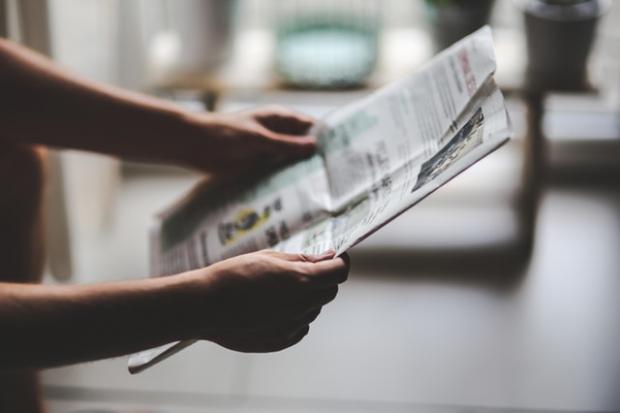Let’s start with a little test.
First question.
In your opinion, what are the three biggest problems that the world is facing right now?
Second question.
Can you think of three possible solutions to these problems?
Third question.
Which one was it easier to think of? The problems? Or the solutions? And why?
Journalism and our Brains’ Negativity Bias
It was probably much easier for you to think of the problems than the solutions, right? But why is that the case?
Are we programmed to focus on the negative? Well, in a way, yes.
Studies from the field of neuroscience suggest that human brains have evolved – as part of a primitive survival mechanism – to be more sensitive to negative news and react more strongly to it. But our perception of the critical issues is also highly influenced by the media – by the topics that news outlets and other broadcasters chose to focus on, the perspectives they decide to take, even the words they chose to use.
And when we look around at the current media landscape, it looks like the majority still believe that it’s negative, not positive news, that sells, and follow the old adage: “If it bleeds, it leads.”
In the age of fast news – where established news outlets compete with Twitter for breaking stories – it can be tempting to receive as many clicks as possible by focusing on shocking, negative content. And if we look at the statistics, unfortunately, it looks like it gets results. A 2012 study from advertising company Outbrain showed that the average click-through rate on headlines with negative superlatives was a staggering 63 per cent higher than that of their positive counterparts.
What kind of influence does this have on us? Well, here again, we can take a look at the research, which shows that exposure to predominantly negative news creates misperceptions and apathetic readers.
Misperceptions
A study from the British market research organisation Ipsos-Mori, “The Perils of Perception”, shows that our perceptions of the world are often at odds with the reality – and usually significantly more negative. Researchers put the same questions to people in 38 countries and found a pattern. When looking at subjects as diverse as murder, terrorism, teen pregnancy, health and mobile phone usage, people’s perceptions were significantly more negative than the evidence shows. For example:
- While the murder rate has dropped by an average of 29% since the year 2000, in most countries questioned, only 7 per cent of people believed that the rate had fallen.
- When asked to guess the proportion of prisoners in their countries who are immigrants, the average guess was 28 per cent. The actual answer is only 15 per cent.
If you live in one of the countries surveyed, you can even do the quiz yourself here.
Apathy
Research has revealed (unsurprisingly, perhaps), that exposure to negatively framed news makes people less likely to take positive action than news stories that take a more positive approach. Dr Denise Baden, an associate professor at the University of Southampton Business School, surveyed 2,000 people and discovered that presenting news in a negative way led to “disengagement, avoidance, negative mood and anxiety” among those in the trial. The more negatively people felt after consuming a news story, “the less likely they were to voice their opinions or take actions to make the world a better place”.
The effects are most clear when it comes to complex and hugely challenging issues, climate change and global warming, for example. While reporting on these topics is of course necessary, an excessively negative approach has led to what Victoria Herrmann, Managing Director of the Arctic Institute, calls a “doomsday narrative” saying that:
“The story you read in the newspaper or the documentary you watch on Netflix holds the immense ability to shape what we see and don’t see. Those visibilities and invisibilities shift our perspectives. And it’s those perceptions upon which we base our actions. (…) The narratives we read, hear and see informs how we understand climate change, and that understanding dictates whether we act or don’t.”
It’s obviously really. Only a positive, constructive approach will inspire and engage audiences, and we’re very unlikely to act to try and make a change if the outcome already seems inevitable.
So, what’s the solution?
We need to hear other half of the world’s stories. Not just the problems, but also the solutions. Stories about things that are working. About visionaries and revolutionaries. About possible collaborations and change-makers.
It’s called constructive journalism.
What Is Constructive Journalism?
The term “constructive journalism” or “solutions journalism” is thought to have been coined academically in 2015. It’s a growing field within journalism which challenges traditionally negatively-biased paradigms and draws on concepts from positive psychology to recognise the potential for sharing and discussing constructive solutions in society.
While it was the usual Scandinavian suspects who led the way – with Danish and Swedish broadcasters among the first to officially include constructive elements in their daily news reporting – constructive journalism institutes have gradually established themselves around the world, with the Denmark-based Constructive Institute, now joined by the the Solutions Journalism Network in the USA and the Constructive Journalism Project in the UK. And international news sites are also increasingly including constructive news elements in their reporting probably without you even realising it.
You can find examples in the Huffington Post’s Impact section, in the New York Times’ weekly “Fixes” column and in the BBC podcast entitled People Fixing The World. And, of course, since 2007, RESET.org and its English-language sister site, RESET International.
What are the key features of constructive journalism?:
- It presents problems by looking at the responses to a problem, by focusing strengths, resilience and solutions in the face of difficulties
- By looking at various sides of an issue, it presents a complex and accurate portrayal of reality
- It focuses on effectiveness, not just good intentions, and demands available evidence of results
- It is carefully researched, equips readers with the necessary information and empowers them to react constructively
- It remains critical and factual and takes into account the limitations of the approach
- It aims to provide insight that others can use and build upon.
Summing it up, we could say: while “traditional” journalism asks the questions: Who? What? Where? Why? and When?
Constructive journalism also asks: What now? What is working? How can we have more of it? And what can I do to help?
At the same time, it’s not the same as purely “positive journalism”, feel-good, “fluff” stories about individuals or one-off incidences with little social relevance. Instead constructive journalism talks about socially relevant topics, maintains the same journalistic rigour and integrity as traditional news outlets.
Why Does the World Need Constructive Journalism?
1. Because it’s the only way we can achieve change.
As we explained above, the field of positive psychology has long shown that constructive, solution-orientated accounts of the world are much more likely to encourage readers to engage with their community and with society at large than purely negative news reports.
Research by Cathrine Gyldensted and Dr Denise Baden at Southampton University into negative bias in the news revealed that news stories with a positive approach:
“gave rise to significantly higher motivation to take positive actions (donate to charity, be environmentally friendly, make opinions known etc.) than negative news stories.”
And a recent survey by positive psychology researcher Jodie Jackson, at the University of East London, revealed that
“consuming positive news can lead to increased acceptance of others, a feeling of community and motivation to contribute to social change.”
The only way we can make a change is by believing that we can.
2. Because it’s what people want to read (and what they want others to read too).
While stories with negative headlines might get more clicks, the research consistently shows that it’s the “constructive” stories that are most-often shared. News published in Huffington Post’s “What’s Working” section gets shared on average three times as often as the rest of the content on the site. A study into viral news and emotion from the University of Pennsylvania looked at the entries on the New York Times “most e-mailed” list over three days, and found that “positive” articles were consistently being shared more often than “negative” ones.
And what was the Most Liked Tweet of 2017? No, it wasn’t from Trump, it was Obama’s positive comments celebrating diversity and denouncing hatred.
3. Because there’s not enough of it being made.
Studies show that there’s a huge demand for these kind of constructive news stories, particularly among young people. Around two thirds, 64 per cent, of under 35s in a BBC World Service survey said they “want news to provide solutions to problems, not just news that tells them about certain issues.” The relaunch of constructive journalism magazine Positive News was recently crowdfunded to the tune of a quarter of a million GBP in just 30 days.
And a recent survey by the Guardian, who asked focus groups what they wanted to hear more of in their next climate change campaign, declared that the resounding answer was “solutions stories” or “positive climate stories”.
The Future of Constructive Journalism
Journalists have the potential to change the way we see the world, and also to shape our beliefs in our ability to change it. Backed up by this understanding, and inspired by the desire to create a sustainable future, we’re optimistic that the constructive journalism movement will continue to grow.
As well as informing people about what is going on (and going wrong!) in the world, RESET and other constructive journalism magazines and platforms also believe that it is our duty to facilitate and inform the debate about a better tomorrow. We want to offer a platform for solutions and visionary ideas which could make a better world a reality. We want to nurture imaginations with information and alternatives, firm in the belief that we can’t solve the problems of today and tomorrow with the same yesterday mindset that created them.
How do we do this at RESET?
- The RESET News Blog presents innovative, inspiring and smart solutions from all kinds of fields – green energy, education access, animal protection, humanitarian aid, health and smart cities.
- Our Knowledge articles explain what you need to know about the most crucial issues of our age. Can the blockchain really make our lives better? How do renewable energies work? When will e-mobility finally catch on?
- Want to get involved? That’s what the Act Now section is for. How can you use the internet to support refugees? What do eco-friendly gifts look like in 2018? How can you get involved in the sharing economy?
A socially- and environmentally-just world can only be created when we combine an understanding of the problems with a visionary outlook, when we have hope for the future and believe that every individual in the global community has the agency to act.
What were those three problems that you thought of at the beginning of this article?
Maybe the solutions aren’t actually all that far away…








